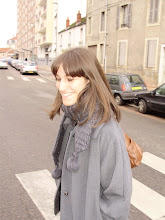


Hi,
I was very busy those last months. But I continue my blog. Now I want to present you one japanese artist who will be in Château de Versailles during spring 2010 (12th of September till 12th of December).
To introduce him very briefly, let's say that he is a prolific contemporary Japanese artist who works in both fine arts media, such as painting, as well as digital and commercial media. He blurs the boundaries between high and low art. He appropriates popular themes from mass media and pop culture, then turns them into thirty-foot sculptures, "Superflat" paintings, or marketable commercial goods such as figurines or phone caddies.
Murakami's style, called Superflat, is characterized by flat planes of color and graphic images involving a character style derived from anime and manga. Superflat is an artistic style that comments on otaku lifestyle and subculture, as well as consumerism and sexual fetishism.
Like Andy Warhol, Takashi Murakami takes low culture and repackages it, and sells it to the highest bidder in the "high-art" market. Also like Warhol, Murakami makes his repacked low culture available to all other markets in the form of paintings, sculptures, videos, T-shirts, key chains, mouse pads, plush dolls, cell phone caddies, and $5,000 limited-edition Louis Vuitton handbags. This is comparable to Claes Oldenburg, who sold his own low art, high art pieces in his own store front in the 1960s. What makes Murakami different is his methods of production, and his work is not in one store front but many, ranging from toy stores, candy aisles, comic book stores, and the French design house of Louis Vuitton. Murakami's style is an amalgam of his Western predecessors, Warhol, Oldenberg and Roy Lichtenstein, as well as Japanese predecessors and contemporaries of anime and manga.
You can discover his website here.







